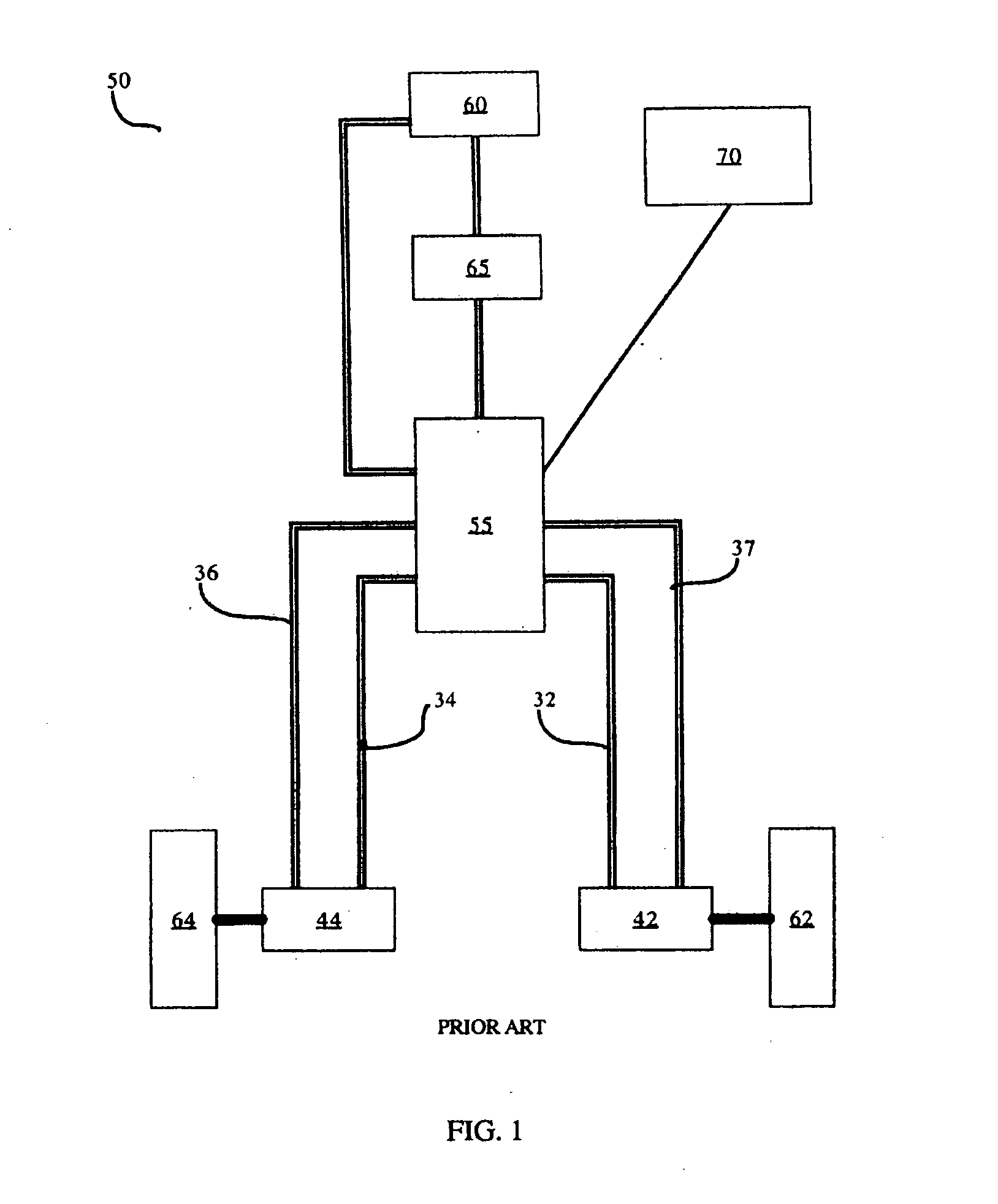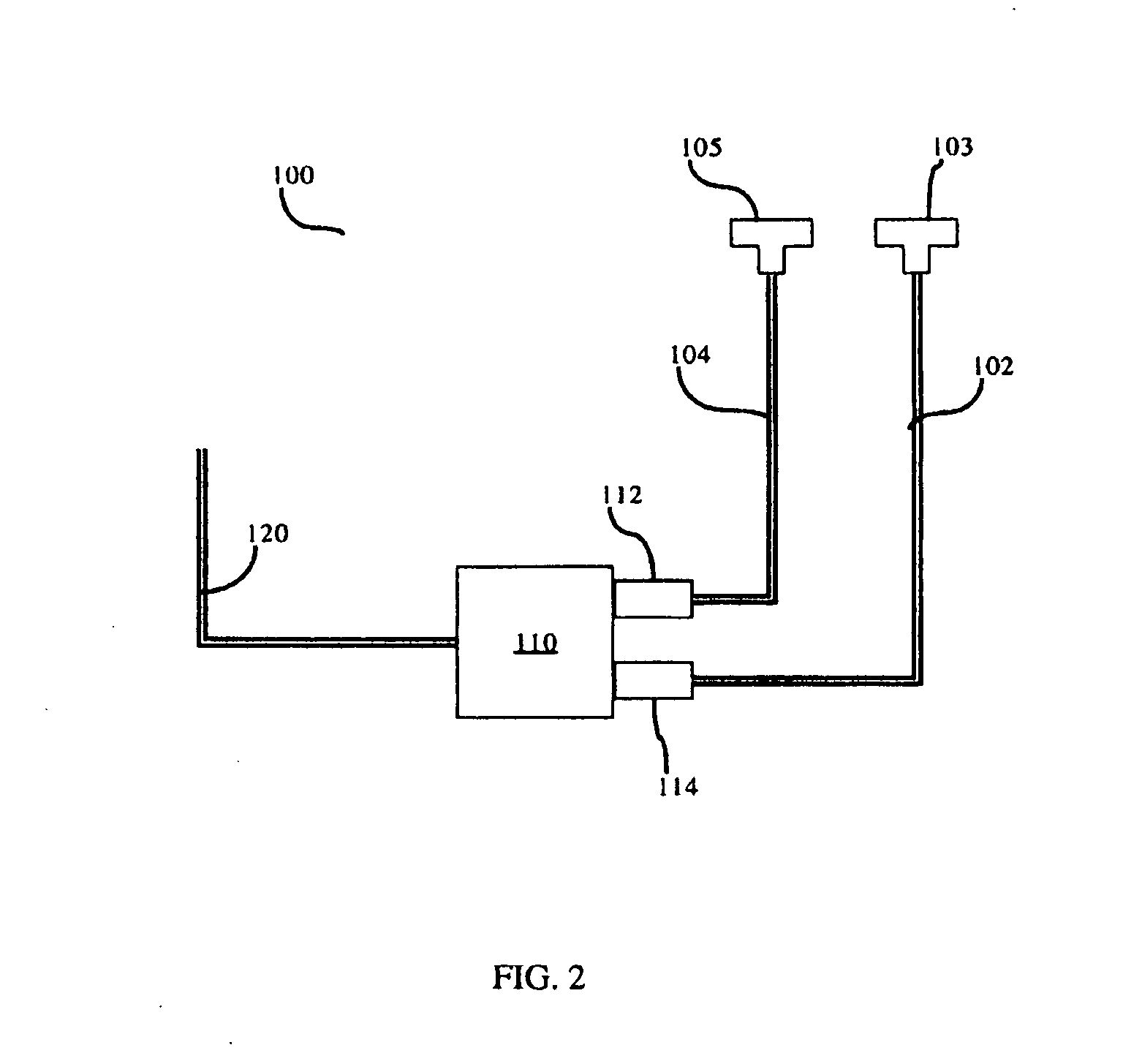System and Method for Automatic Steering
a technology of automatic steering and automatic steering, applied in the direction of steering components, non-vehicle mounted steering controls, vehicles, etc., can solve the problems of erratic steering, problems such as problems in retrofitting a conventional automatic steering actuator system to a hydrostatic steering system, and not as successful on hydrostatic steering agricultural vehicles
- Summary
- Abstract
- Description
- Claims
- Application Information
AI Technical Summary
Benefits of technology
Problems solved by technology
Method used
Image
Examples
Embodiment Construction
:
[0021]FIG. 1 is a schematic illustration of a conventional hydrostatic drive system of a vehicle as known in the prior art. A conventional hydrostatic drive system, such as the hydrostatic drive system 50 comprises: a right hydraulic motor 44; a left hydraulic motor 42; a right drive conduit 34; a right return conduit 36; a left drive conduit 32; a left return conduit 37; a valve block 55; a tank 60; a pump 65 and a manual steering control 70.
[0022]In typical operation of the hydrostatic drive system 50, hydraulic fluid from the tank 60 will be pressurized by the pump 65 and the pressurized hydraulic fluid routed to the valve block 55. The valve block 55 is a hydraulic circuit that can selectively vary the flow of hydraulic fluid. From the valve block 55, this pressurized hydraulic fluid is routed through the right drive conduit 34 to the right hydraulic motor 44 to drive a right wheel 64, connected to the right hydraulic motor 44. From the right hydraulic motor 44, the hydraulic f...
PUM
 Login to View More
Login to View More Abstract
Description
Claims
Application Information
 Login to View More
Login to View More - Generate Ideas
- Intellectual Property
- Life Sciences
- Materials
- Tech Scout
- Unparalleled Data Quality
- Higher Quality Content
- 60% Fewer Hallucinations
Browse by: Latest US Patents, China's latest patents, Technical Efficacy Thesaurus, Application Domain, Technology Topic, Popular Technical Reports.
© 2025 PatSnap. All rights reserved.Legal|Privacy policy|Modern Slavery Act Transparency Statement|Sitemap|About US| Contact US: help@patsnap.com



